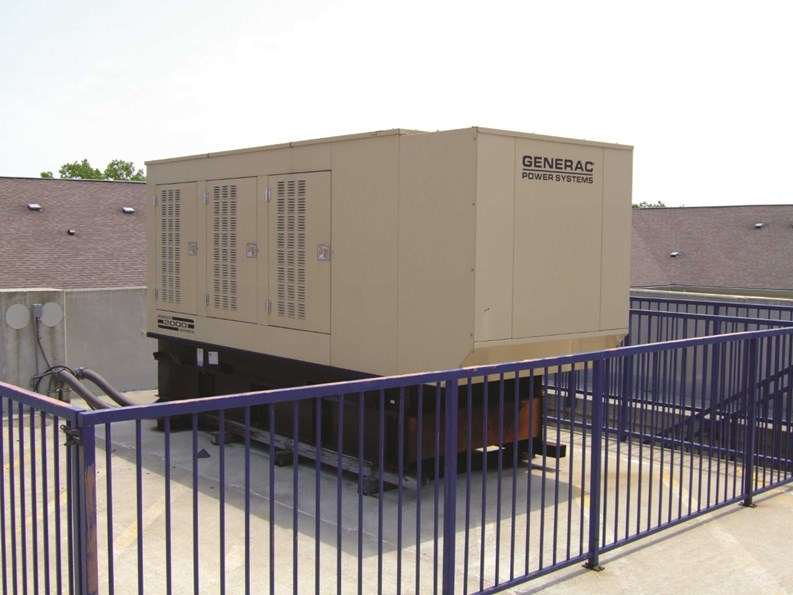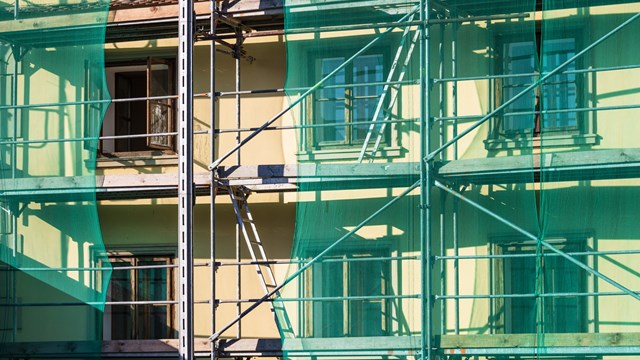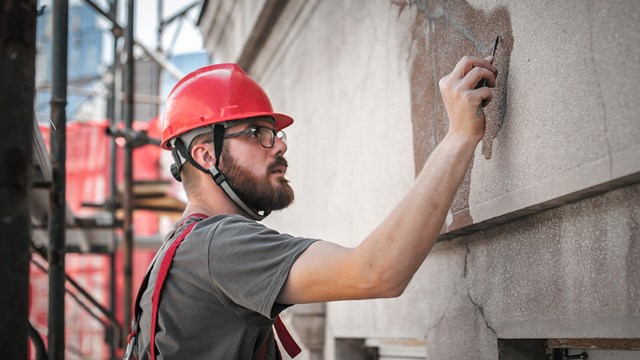When the power goes out and city dwellers are left in the dark, people assume they won’t be stuck in cold apartments for days. Just as we expect our hospitals to have backup power generators to save patients who are on life support systems or in the midst of surgery, we also count on generators to save residents of high-rises and other multifamily communities during a blackout or another power interruption.
In times of emergency, like a power outage due to foul weather or a fire in the building, certain aspects of many multifamily structures must function properly; steps must be free and clear so people can use them, and doors to stairways must function. In larger buildings, common areas, corridors and elevators usually are illuminated through the power provided by an emergency generator.
Though some older buildings in Chicago have thus far opted out of having a backup generator installed in their properties, many newer complexes often have such a power backup, and many have been required by law to put in a generator. In Chicago, any building 300 feet or taller must have an emergency service of some kind. Condo buildings in the city are considered a high-rise if they are 80 feet or taller, and such buildings are also required to have an emergency generator. For most buildings required to have such a service, it almost always means a standby generator is needed, says Tim O’Connell, sales manager for Hodgkins, IL-based Cummins Power Generation, a supplier of generators and electrical supplies.
Powering Up
There are two kinds of generators a building’s staff use in a power outage: stationary sets or portable sets. A portable generator could be used by the staff of the building during an emergency or during construction work, if the structure does not have a stationary set. Portable sets vary widely in quality, and can last anywhere from four to ten years. The generating capability of stationary sets in residential buildings can range from 60 kilowatts to 3,000 kilowatts. These units can cost as little as $40,000 or as much as $1 million, and last 20 to 30 years, O’Connell says.
How long a generator lasts is partly dependent upon how much it is used, says Raymond S. Groban, co-owner of Chicago-based Groban International, which sells generators and has been in business since 1948. “The average number of hours of use/test on a standby generator is 300 hours a year. Part of that time comes from the exercising—we recommend that generators be exercised twice a month for an hour or two,” he says.
Testing the unit and running it will prevent gas in it from going bad prematurely, and will alert maintenance employees to any problems with the machine. A couple of times per year, a manufacturer’s representative of the generator’s maker should come to the building and thoroughly test the generator.
The longevity of a generator depends upon it being properly maintained, which starts with it being properly installed. By law, generators for residential buildings in Chicago must only be installed by a licensed contractor. Depending upon the complexity of the generator, the building superintendent may be capable of performing routine maintenance on it. Boards of many buildings opt to have a service company visit and turn on the unit, as well as check the unit’s fuel, its filter and its automatic transfer switch.
If a generator with an automatic transfer switch is well-maintained, when the lights go out it will turn on and provide emergency power to certain systems in the building. Which systems it powers is a question of what is required, and what residents want.
“In an emergency situation, a building has to provide electricity to the elevators. Which generator you pick depends on how much you want to go beyond an emergency, toward comfort,” Groban says. “It’s not critical that you have air conditioning, but it is critical that you have elevators.”
How powerful the generator is that a building’s board picks for installation depends upon various factors—some legal, and others, lifestyle-based.
“On site generators are used for a variety of reasons, ranging from life safety requirements, convenience, powering fire pumps, sump pumps, elevators, or just convenience,” says John Schifferdecker, spokesman for electrical supplies distributor Steiner Electric Company, based in Chicago and founded in 1916. “The more areas to back up, the larger the generator and more expensive the [generator installation] project will be.”
Stationary emergency generators that are installed in multifamily buildings typically are either diesel fuel powered units, or natural gas powered units. Natural gas powered generators are connected by a line to the natural gas utility’s system. Because of its reliability, natural gas is considered a 100 percent (uninterruptable) power source for a generator, since the natural gas system is rarely interrupted.
Diesel fuel powered generators need to have surplus fuel on-site in order to operate. To be ready in the event of an emergency, the building’s staff also must have the generator gassed up. Usually a residential building’s generator will be used for no more than a few days at a time, meaning that enough fuel to run it for that long will be stored on-site.
Stationary standby generators often are located in the basement of a building, near the furnace room, in a room specifically created for the generator. In other cases, these units are situated outside the building on a concrete pad, near the transformer. Sometimes stationary generators are set up on a building’s roof, and in smaller buildings, the generator sometimes is located in the garage.
These emergency units do not need to be warmed up before reaching full capacity. Larger, liquid-cooled generators usually have an engine block heater which keeps the block warm and ready to go. Such generators automatically start if the utility fails, and automatically switch off when utility power returns.
Professional Help
Perhaps because generators are usually unseen and often unrecognized, the absolute necessity of them is lost on some residents of multifamily buildings. While keeping some of a high-rise building’s lights on and its elevators running during a power outage might seem to be a convenience to some able-bodied people, disabled people and some elderly people with mobility problems truly need the elevators to work so that they can get out of the building safely. For some people, having the emergency system in place can be a lifesaver.
“When the city of Chicago updated its building code in 2000, the revised law said every high-rise building that is 80 feet in height or taller had to put an emergency generator in,” O’Connell says. “There was quiet rejoicing in my office. Very few condos ever want to pay for a generator set.”
Though installing a generator in a multifamily building can be a costly project, it’s a rather plain solution to a common need. The power generation needs required of such a unit also usually are simple. That means in most cases, the generator will be expected to provide power for common areas, garage doors and elevators. Sometimes, a building’s generator also will provide power for heat, refrigerators and lights in the structure’s apartments—but residents will pay a premium for the extras.
“The generator should be sized for the urgent needs of the establishment,” Groban says.
When planning to install an emergency generator in a residential building, the building’s board members and staff must first ask the experts how to proceed. Usually, this means hiring a consulting engineer or an architect to oversee the process, beginning with a review of the building’s emergency power generation needs. Based upon that evaluation, the engineer will determine how large the building’s generator should be. Next, the engineer designs the necessary transfer switches for the generator, as well as a room in the building (or exterior/roof space) in which to locate the generator.
The process includes the designer, as well as a general contractor, an installing contractor, the condo board, the manufacturer, and the local distributor who supplies the equipment. Usually, the design consultant will offer to write up a Request For Proposals document (which describes the parameters of the generator installation project), and distribute it to electrical contractors so they can bid on the job. The board may hear the consultant’s recommendation for which contractor to use for the job, and then the group will vote and choose the contractor. That general contractor will ensure that the installation project meets all safety requirements.
“Any generator, regardless of size or type (natural gas or diesel fueled) must be secured, well ventilated and well maintained. Like any engine device, these generate heat, have moving parts, exhaust gasses, and hot fluids,” Schifferdecker says.
The laws that govern the use of generators in multifamily communities vary from place to place. But questions regarding the generator’s operation can include where it will be placed, noise created by the unit, and the storage of fuel (for diesel generators). Some local building codes require a generator if a building is above a certain height (for elevators and fire pumps, for example), while others do not.
The architect and installing contractor will work together to determine the proper size generator, the type of generator and where it is placed. These determinations could require analysis of the building’s roof structure, ventilation system, the concrete pad’s size and strength, the fuel source for the generator (gas lines or size of diesel fuel tank), and the fresh air intake for the unit.
Jonathan Barnes is a freelance writer and regular contributor to The Chicagoland Cooperator.







Comments
Leave a Comment